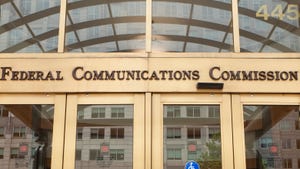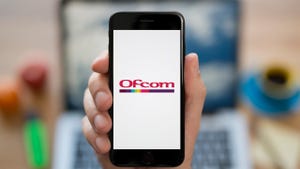TPG taps Nokia for indoor 5GTPG taps Nokia for indoor 5G
Australian operator TPG plans to use Nokia Smart Node femtocells to ensure top-notch 4G and 5G indoor coverage for enterprise customers.
October 26, 2021

By Anne Morris
Australian operator TPG plans to use Nokia Smart Node femtocells to ensure top-notch 4G and 5G indoor coverage for enterprise customers.
Since Huawei was excluded from Australia’s 5G infrastructure, TPG Telecom has been pretty democratic when handing out 5G vendor contracts, with Ericsson, Nokia and Samsung all in the mix.
Nokia has been especially prominent: the Finland-based vendor is supplying the equipment for TPG’s standalone 5G network at 700 MHz, for instance. While use of 700 MHz spectrum is expected to provide more reliable indoor coverage, TPG clearly feels it needs more tools to target the enterprise market. The telco now also plans to use Nokia 5G femtocells (really small mobile base stations) to provide enterprise customers with dedicated 4G and 5G indoor coverage.
As things stand, the two partners have deployed a Nokia 5G femtocell, called Smart Node, in a live network — presumably to make sure it all works well. TPG indicated that it will be rolling out the Smart Node-based service to “selected enterprise customers” in the coming months.
Jonathan Rutherford, group executive, enterprise and government at TPG Telecom, described Nokia Smart Node as a “simple, cost effective and seamless ‘plug and play’ solution to provide indoor 5G coverage for small and medium businesses and corporate branch offices.”
Indeed, the focus is on ease of deployment and scalability, depending on whether a customer needs a single or multiple units to meet its indoor coverage requirements.
Nokia first introduced Smart Node in May 2021 and said it would be commercially available from the fourth quarter of this year. It would appear that TPG is the vendor’s first publicly announced customer for this product.
TPG is now motoring ahead with 5G following delays caused by a long period uncertainty after it agreed to merge with Vodafone Hutchison Australia. The A$15 billion merger was finally completed last July. During this time, the Australian government also banned the deployment of Huawei-made 5G equipment, which hit TPG hard.
Since then, in addition to the Nokia deals, TPG has commissioned Ericsson to virtualize its 5G core and is trialling Samsung’s virtualized RAN solution on 26 GHz spectrum.
In its results presentation for the first half of 2021, TPG said it is expecting to surpass its 5G rollout target of 85% population coverage in the top six cities in 2021, by reaching this milestone in four additional regions. The telco is now aiming for 85% population coverage on the Gold Coast, Sunshine Coast, NSW Central Coast and in Wollongong by the end of the year, in addition to Sydney, Melbourne, Brisbane, Adelaide, Perth and Canberra.
At the end of June, TPG said 5G coverage was available in more than 700 suburbs, while more than 750,000 5G-enabled devices were on the network. The operator has also launched a 5G fixed wireless access service on its 3.6-GHz spectrum, building on its existing 4G-based offering to provide a fixed broadband alternative.
You May Also Like








.png?width=300&auto=webp&quality=80&disable=upscale)


_1.jpg?width=300&auto=webp&quality=80&disable=upscale)